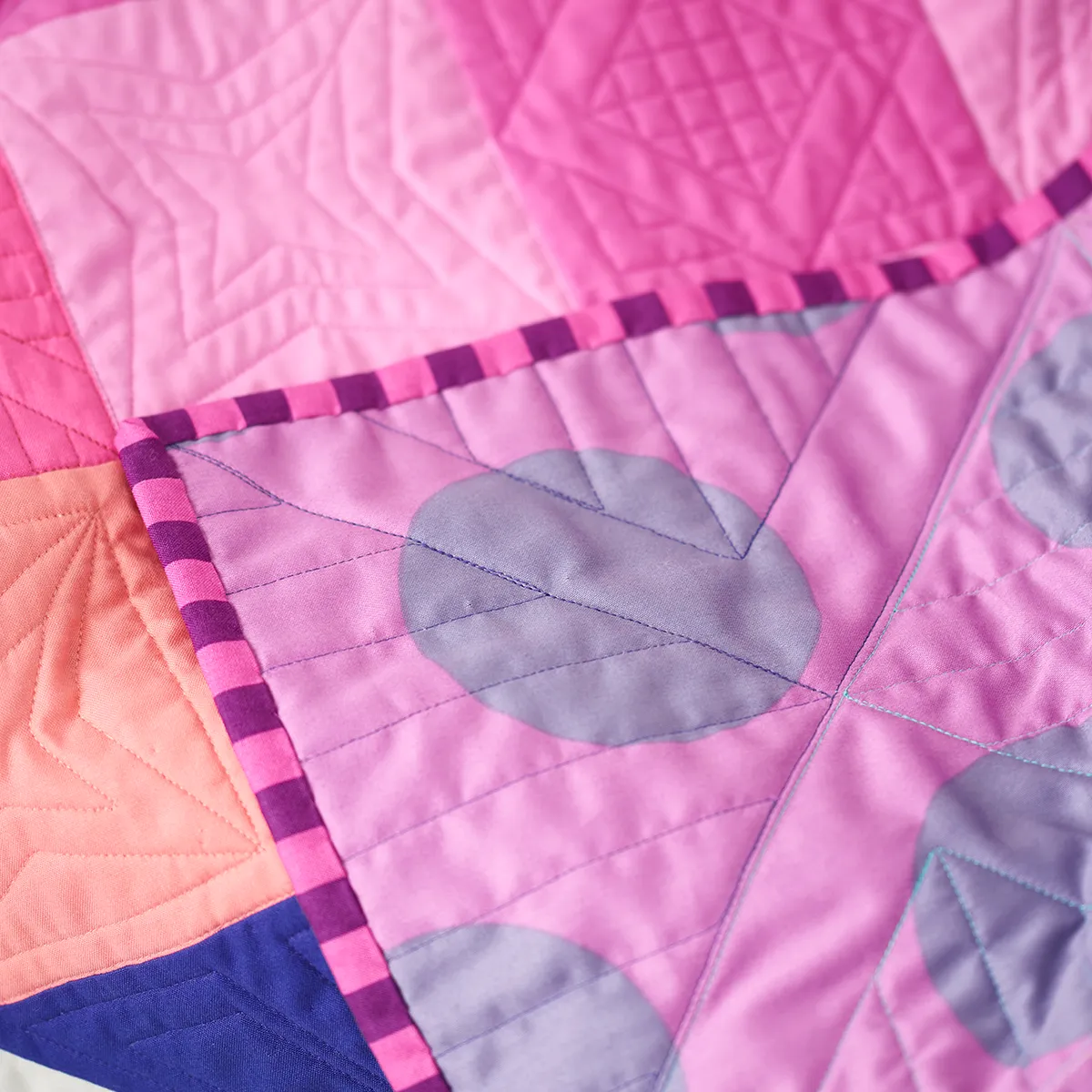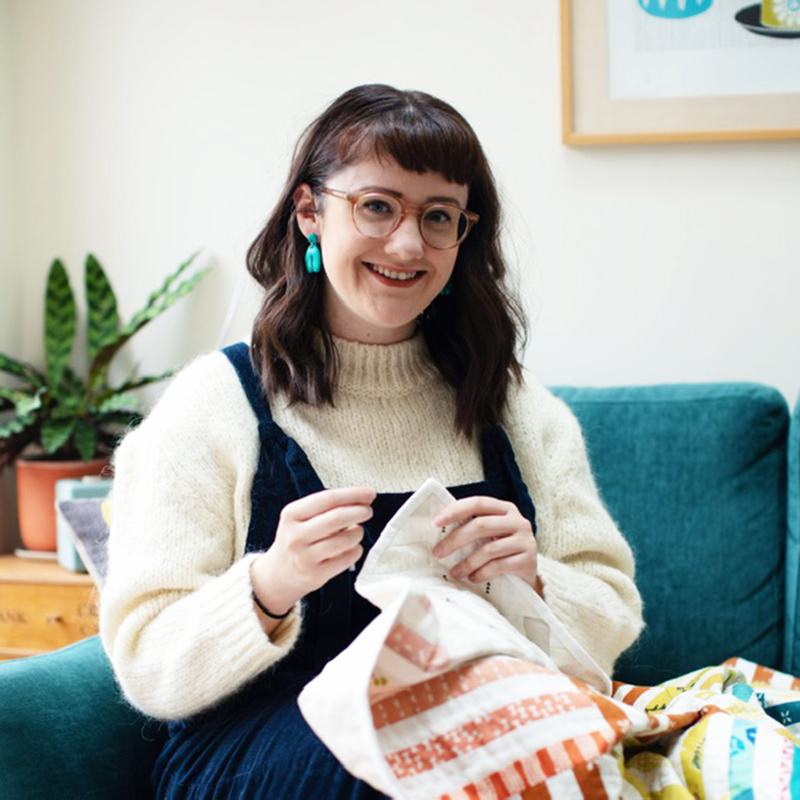Choosing the right thread can make or break a quilt, right down to the colour, weight and quilting design that’s selected to best show it off. Whether you’re a hand quilter or a machine quilter, a newbie to the craft or a seasoned pro, it’s worth getting to know your thread stash to get the most from what you have available.
We've joined forces with the thread pros over at Aurifil to bring you these quilting tips for anyone who's new to quilting or looking to up their game. From matching your top and bobbin thread to time-saving techniques, the best colours for piecing to our very favourite quilting weights, we’ll share our best quilting tips for how to use threads to your advantage. So just settle in and get set for quilting success!
Quilting tips for best thread results
1. Thread gloss is your best friend
If you’re taking on a hand stitching project, whether it be hand quilting, English Paper Piecing, hand appliqué or something else (there’s tonnes of sofa sewing out there!), consider pairing your thread with a high-quality thread gloss. Although Aurifil thread is guaranteed to be smooth and silky already, the addition of thread gloss will prevent the thread from getting tangled and knotted and will glide through your fabric like a breeze.
2. Invest in an assortment of basics
Luckily for you, Aurifil make plenty of assortment packs to help you boost your thread stash and learn what threads you reach for the most often. Most quilters use 40wt and 50wt threads for piecing and quilting, but it’s important to learn what your favourite weights are and what works best with your machine!
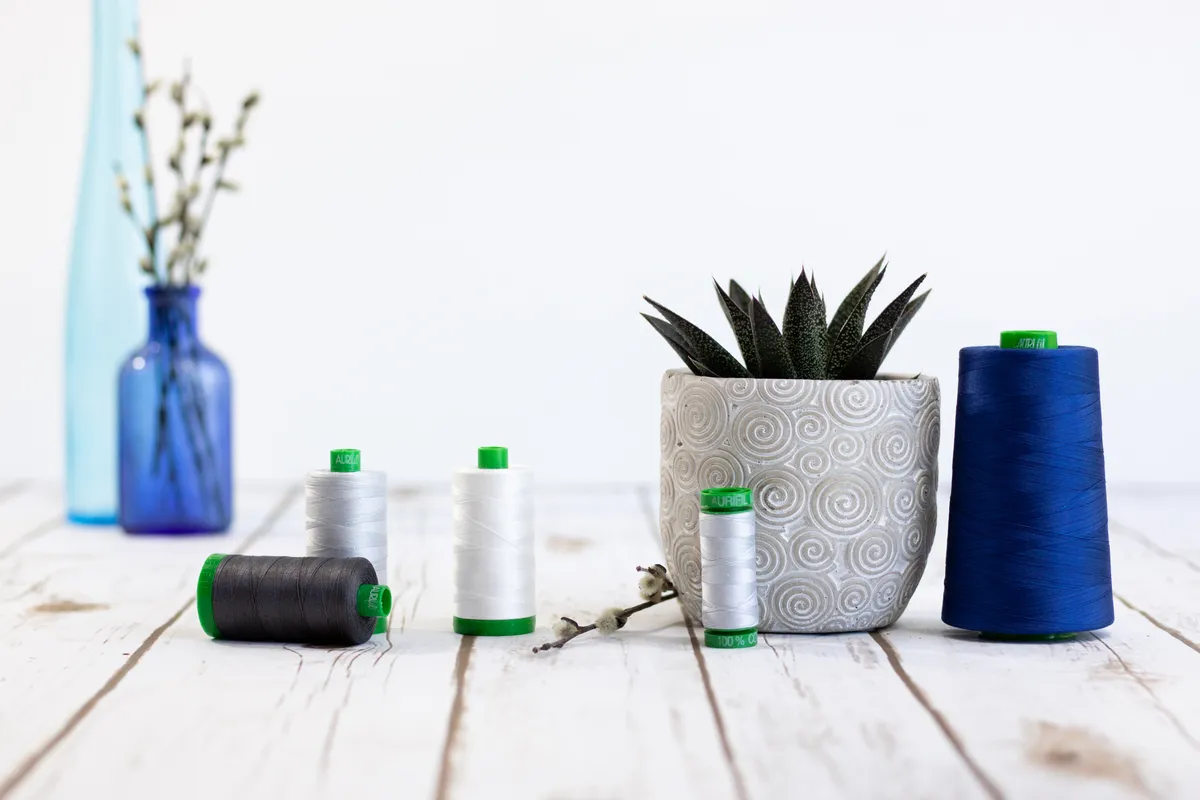
3. Don’t get distracted by pretty colours
It’s easy to get wooed by that punchy pink or dreamy turquoise, but is that what you’re going to use regularly in your quilts? We bet that nine times out of ten you’ll be using a nice, safe neutral when you’re piecing blocks together – a mid grey works well when sewing with different coloured fabrics, as it won’t jump out and contrast through your perfectly pressed seams.
4. Pick a lightweight thread for your bobbin
Using a finer 50wt-80wt thread in your bobbin will help to prevent any dense quilting design from becoming too stiff, and will let the quilting on the front really stand out. As it’s not as thick as some other threads you’ll also fit more thread onto one bobbin, meaning that you won’t have to change things up or play ‘beat the bobbin’ as often!
5. Take time with tension
It’s important to make sure your thread tension is spot on, regardless of what weight you’re using as your top and bobbin threads. The incorrect tension either way will result in you seeing the other thread peek through the wrong side of your quilt, so work out the best setting for your machine based on your favourite thread combos and make a note that you can refer back to.
6. Match your colours
If you’re somewhat of a sewing newbie or aren’t totally confident in setting the right thread tension for your project, match the colour of your bobbin thread to your top thread. This way, if any of your tension does happen to be slightly off, you won’t be able to tell!
7. Think about the back
If you’re a little more confident with the tension on your sewing machine, consider the thread colour against your backing fabric. Do you want it to stand out and contrast against your quilt back or would you prefer for it to be a more subtle texture? Unravel your thread a little and hold it against the fabric to determine what works best for your project.
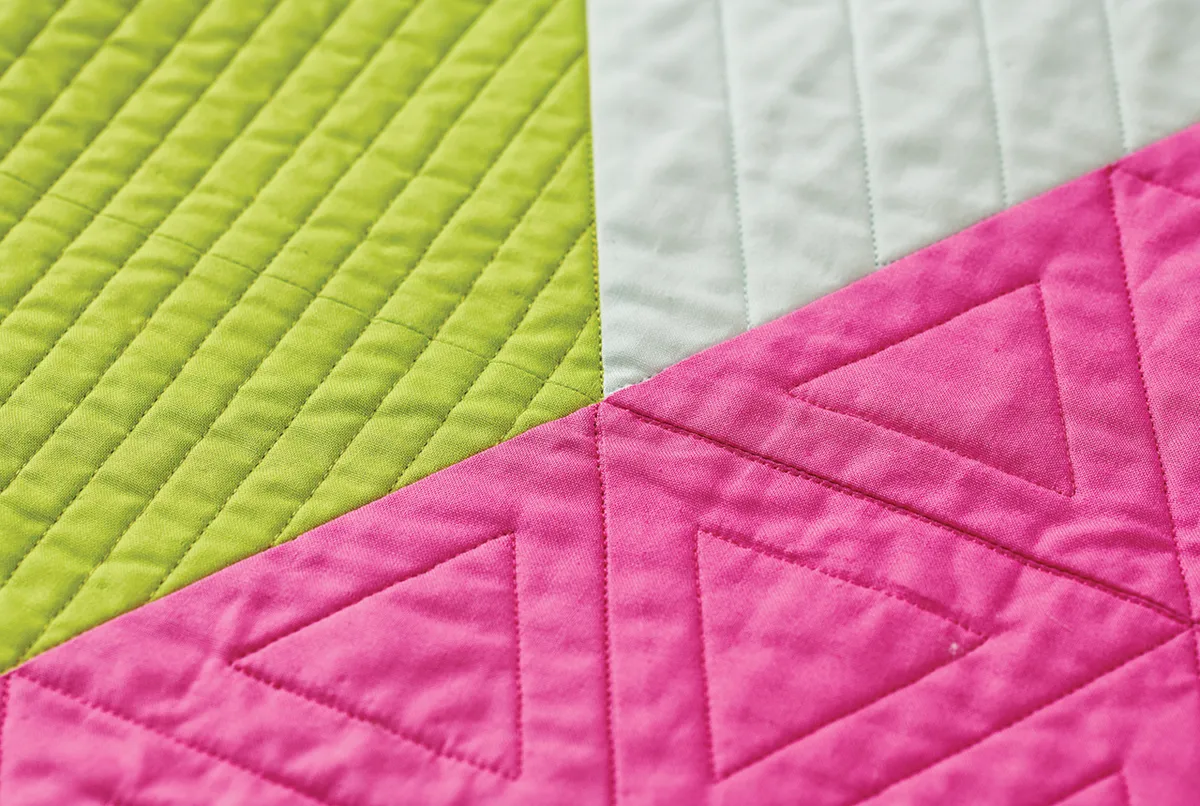
8. Bury your threads
An important tip to make sure your quilting stays nice and secure! If you finish a line of stitching (or run out of thread, for that matter) in the middle of your quilt, make sure you reverse your stitching a little and bury the end of the threads nicely in the quilt sandwich so that none of your precious stitching unravels at any point.
9. Prepare bobbins in batches
Let’s face it, there’s nothing worse than getting into the flow of quilting, running out of bobbin thread and having to pause to re-wind one. Wind a batch of bobbins based on the size and density of the quilting you plan to do, so that when you inevitably do run out you can simply lift up the quilt, swap them around and keep going.
10. Use the right needle
Another important duo in the quilting world: needle and thread. Pick the perfect pairing and ensure that you’ve got the right sewing machine needle to match your chosen thread. As a rule of thumb, a 50wt thread pairs well with an 80/12 needle, a 40wt thread suits a 90/14 needle and a 28wt or thicker thread will benefit from a 100/16 needle. For more on this, see our guide to sewing machine needles.
11. Go bold with a thicker thread
A thicker thread – such as Aurifil’s 28wt – will give your quilts a bolder, hand quilted vibe, and will make your quilting design really pop against the patchwork. It’s the perfect solution if you want to achieve a chunkier quilted finish without the patience that hand quilting requires! Even better yet if you opt for a bright and cheery colour to contrast against the piecing.
12. Prepare a sturdy quilt sandwich
If the above tip speaks to you and you do take a shining to 28wt thread, make sure your quilt sandwich is set up for the occasion. A thick cotton batting will help to provide a sturdy base for decorative quilting, and starching both your quilt top and backing fabric will help to prevent any unwanted puckering. This is also great advice for sewing your own wholecloth quilt!
13. English Paper Piecing and needleturn appliqué calls for fine thread
Going in the opposite direction to our favourite chunky machine quilting, hand sewing projects such as English Paper Piecing or needleturn applique will benefit from using a very fine thread. Opt for a shade that will blend in with your fabrics as well as possible, but if you’re using multicoloured prints with a variety of hues, pick a shade that’s somewhere in the middle.
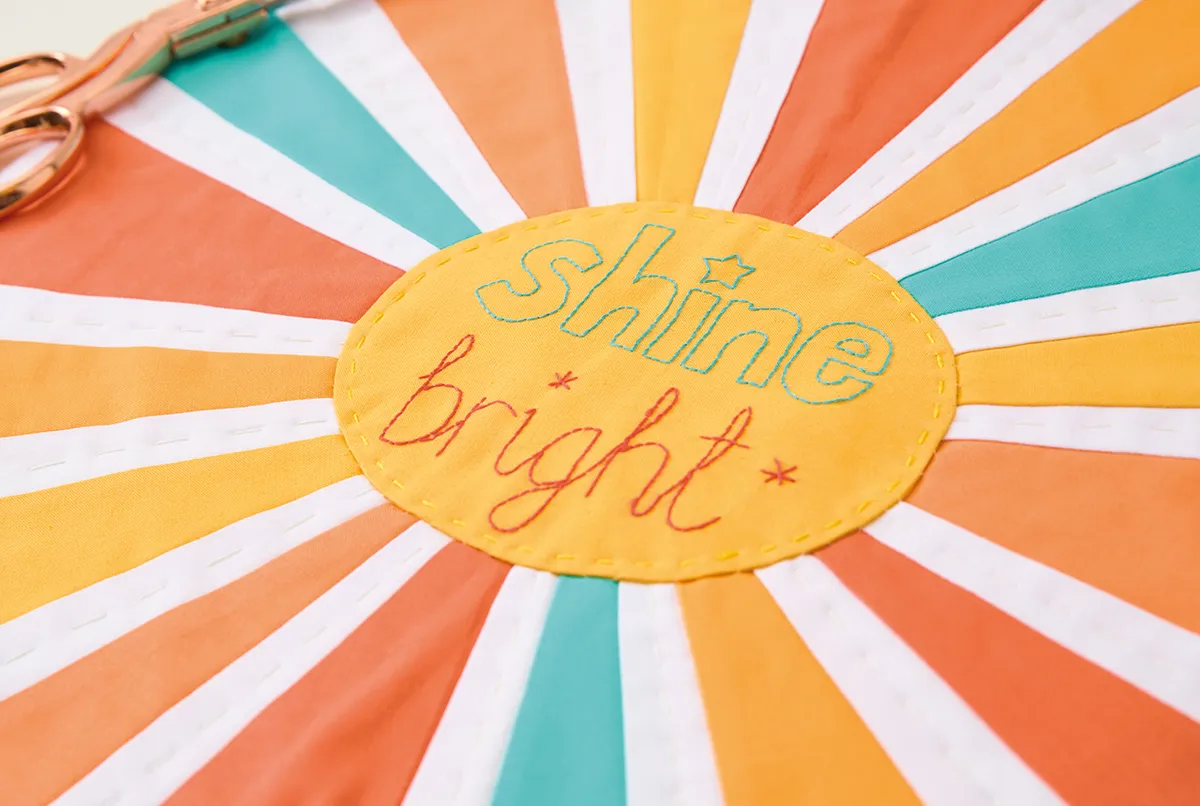
14. Think chunky for tying techniques
Want to try a fun new way of quilting your latest project? Why not ditch the traditional stitching with striking tied details? Use the thickest threads you have handy to make this a real feature – any shade of Aurifloss will do the trick perfectly. Just make sure your quilt ties are close enough together by checking your batting instructions. For more on quilt tying, see our beginner's guide for How to tie a quilt
15. Combine hand and machine quilting
Let’s face it, there’s nothing us quilters love more than a bit of texture! For that extra boost of stroke-worthy stitching on your quilts, why not combine hand and machine quilting? Start with your machine and then use a nice, thick coloured thread to add extra detailing with on-trend big stitches.
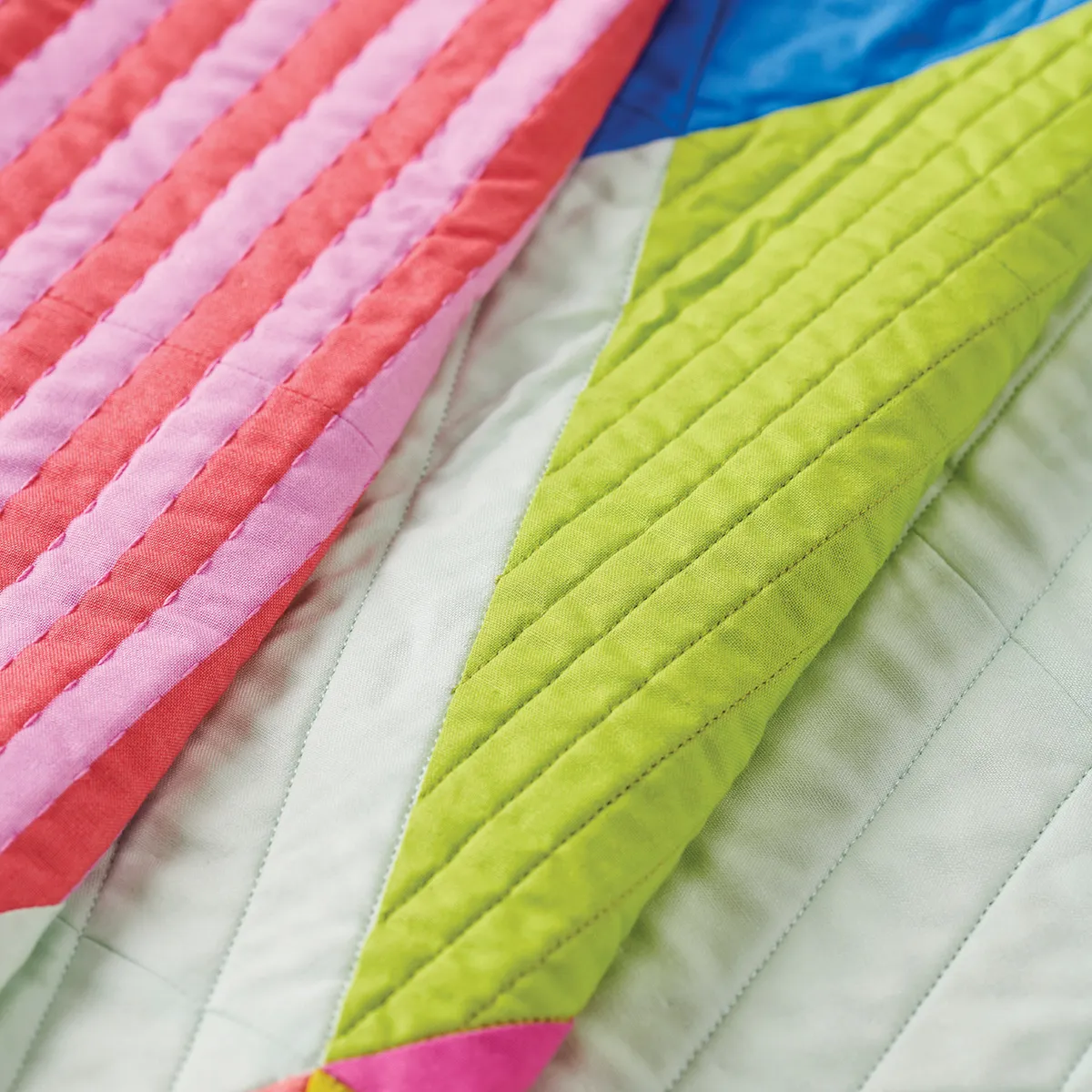
16. Topstitch needles
You’ll find that when you’re sewing with thicker thread – such as 12wt or 28wt – a topstitch needle will work a treat! The elongated eye and groove down the shaft provides a place for heavyweight thread to sit as it works its way through the layers of fabric and batting.
17. Give your machine the VIP treatment
In order for your thread to work to the best of its ability, you need your machine to be working to the best of its ability too! Make sure you regularly clean and service your sewing machine to keep it chugging away in top condition. Remove the bobbin and use your machine cleaning kit to blow away any dust bunnies… it’s super satisfying too – trust us! For more on this, see our guide to How to clean a sewing machine.
18. Consider the thread set-up
Cross-wound spools (like Aurifil threads) prefer to be drawn from the top, rather than the side of the spool. If your machine sits the thread on a vertical post, consider investing in a horizontal mount so that the thread is drawn from the spool in its preferred setup. Alternately, an external thread stand works great with spools and cones!
19. Use the fabric to perfect your hand stitching
If you’re still getting to grips with hand quilting, pick a bold patterned fabric to act as your guide. Anything with a swirling motif or striking lines will be easy to follow with your thread and will help you to perfect your even, consistent stitching. For even more help, use a Hera marker to create indented lines that won’t leave any marks!
20. Show off your binding
A big trend that we’ve noticed over the past year is big stitch binding! Whether you’re used to being in team ‘machine binding’ or camp whipstitch, why not try something new and use your favourite coloured thread to visibly attach your binding to your quilt? Aurifil 12wt is ideal to hand quilt with and will add another level of detail to your latest much-loved quilt.
